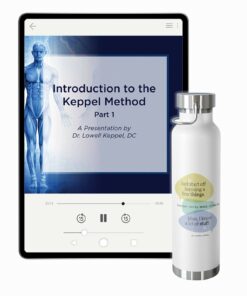Enjoy the latest installment of Dr. Lowell Keppel’s “Good to Know” series for practitioners.
Too often, men’s health seems to be ignored by men!
Why are we so stubborn about getting help? Is it a Superman complex? Are we afraid to be told that we are not invincible?
For the men who are willing to seek our help, let’s look at the prostate.
Here are a few stats about the rate of benign prostatic hyperplasia (BPH) from WebMD:
- Age 31 to 40: one in twelve
- Age 51 to 60: about one in two
- Over age 80: more than eight in ten
Prostate Cancer
Besides skin cancer, this is the most common cancer in men. About one out of six men will be diagnosed with prostate cancer in his lifetime. However, it’s important to keep these numbers in perspective. Because prostate cancer is usually slow growing, the mortality rate associated with it is only about one in 35 men—most will die of other causes before the prostate cancer kills them.
Prostatitis
Citing again from WebMD, prostatitis—inflammation or an infection of the prostate—is unlike most other prostate conditions in that it is more common in young and middle-aged men. Only 5–10 percent of men will develop the condition in their lifetime.
- Urgent and frequent need to urinate
- Need to urinate many times during the night
- Blood in urine or semen
- Pain or burning urination
- Painful ejaculation
- Frequent pain or stiffness in lower back, hips, pelvic or rectal area, or upper thighs
- Dribbling of urine
Notice that I emphasized the pain in the low back and hips. Male patients will often present with low back pain without realizing the back pain is coming from the prostate. The doctor of chiropractic might focus on the back pain and fail to connect the dots to the prostate as the source of the back pain. This is called the somatovisceral reflex. The sick organ causes abnormal nerve flow back to the spine. This abnormal nerve flow reflexes into the motor nerve, making the muscles around the vertebra hypertonic. Thus, the vertebra is locked up, causing the subluxation.
Another relationship is the gland/organ-muscle connection (in this case, the prostate-piriformis and gluteal muscles). When the organ is “sick,” the muscles become inhibited (weak). Consequently, the joints, pelvis, sacroiliac, and L4–L5 are no longer supported.
How do you determine where to start? You can learn to muscle test the piriformis and gluteal medius muscles for inhibition. You can also muscle test the MRA reflex point (see diagram below).
Now the answer to the big question—what do we do for it?
First, determine if the prostate has an infection. If so, many times it will be a yeast, while other times it will be bacteria.
If yeast is the cause:
- Lactic Acid Yeast (9 per day)
- MediHerb Gut Flora Complex (2 capsules 3 times per day)
If bacterial:
- Congaplex (9 per day)
For severe bacterial cases:
- Calcium Lactate (9 per day)
- Cataplex A-C (9 per day)
- Cataplex F Tablets(6 per day)
- And/or MediHerb Cranberry Complex (2 capsules 3 times per day)
Remember that yeast and bacteria can be sexually transmitted, so don’t forget to check the partners.
Product of choice for BPH: According to Dr. Lee, Cataplex F is the product of choice for BPH, with or without infection. It is also a preventative for prostate issues.
For less severe BPH: Consider the cytosol fluid extract Prost-X (6 per day).
For more advanced prostate issues: Prostate PMG (6 per day on an empty stomach).

For BPH and prostatitis: MediHerb ProstaCo (2 capsules 2 times per day).
Talk to your male clients about prostate health. Urinary issues can occur for other reasons, but this is a great place to start.
MRA Prostate Reflex Point
Have the male client put his finger at the base of the scrotum and test if a strong muscle goes weak.
Click here for more MRA tools.
Images from iStock/Korrawin (main), thodonal (post). Muscle point image from SRP.






